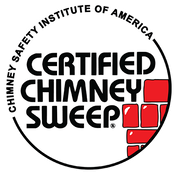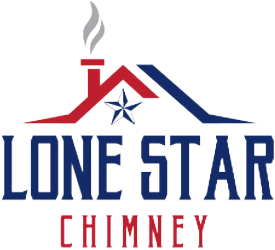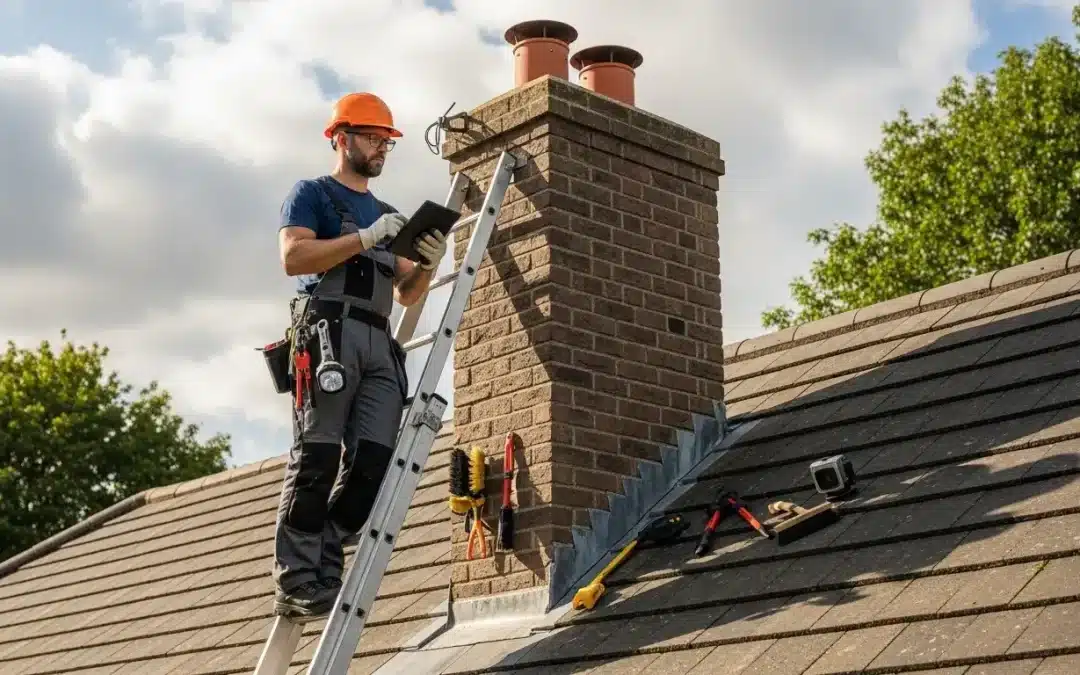When homeowners in Houston experience unusual chimney problems or suspect significant damage to their fireplace system, a standard chimney inspection may not provide the comprehensive assessment needed. In these situations, a Level 3 chimney inspection becomes essential for determining the full extent of structural issues and safety concerns. This most intensive type of chimney examination goes beyond surface-level evaluations to reveal hidden problems that could pose serious risks to both property and residents.
A Level 3 chimney inspection represents the most thorough evaluation available in the chimney industry, involving specialized equipment and techniques that can assess areas typically inaccessible during routine inspections. Unlike basic visual examinations, this comprehensive process may require partial removal of building components or chimney materials to properly evaluate the entire system. Houston homeowners dealing with significant chimney damage, suspected structural issues, or major safety concerns often find that only a Level 3 inspection can provide the detailed information needed to make informed decisions about repairs or replacements.
The importance of understanding when and why this type of inspection becomes necessary cannot be overstated, particularly in Houston’s unique climate conditions. High humidity, frequent storms, and temperature fluctuations can create specific challenges for chimney systems that may not be immediately apparent through standard inspection methods. Lone Star Chimney recognizes these regional factors and emphasizes the critical role that Level 3 inspections play in maintaining safe, functional fireplace systems throughout the Greater Houston area.
Understanding the Three Levels of Chimney Inspection Standards
The National Fire Protection Association (NFPA) has established three distinct levels of chimney inspection, each designed to address different situations and safety requirements. These standardized levels ensure that certified chimney inspector professionals can provide appropriate evaluations based on specific circumstances and potential risk factors. Understanding these levels helps homeowners make informed decisions about the type of assessment their chimney system requires.
Level 1 inspections represent the most basic evaluation, typically performed during routine annual chimney inspection visits or when no specific problems are suspected. These examinations focus on readily accessible portions of the chimney system, including the firebox, damper, and visible sections of the chimney exterior. During a standard fireplace inspection at this level, technicians look for obvious signs of damage, blockages, or deterioration that could affect safe operation.
Level 2 inspections become necessary when changes occur to the chimney system, such as installing new appliances, experiencing chimney fires, or when property transfers take place. These more comprehensive evaluations include everything from Level 1 inspections plus additional assessments of concealed areas, often utilizing chimney camera inspection technology to examine flue interiors. This intermediate level provides more detailed information about chimney condition while remaining less invasive than the most comprehensive option.
Level 3 inspections represent the most extensive evaluation possible, reserved for situations where serious safety concerns exist or when previous inspections have identified potential structural problems. These intensive examinations may require removing or opening concealed areas of the chimney or building structure to access all components of the system. Lone Star Chimney typically recommends this level when extensive chimney damage inspection reveals issues that cannot be fully assessed through less invasive methods.
When Level 3 Chimney Inspections Become Necessary
Several specific situations warrant the comprehensive approach of a Level 3 inspection, particularly when standard evaluation methods cannot provide adequate information about chimney safety and structural integrity. These circumstances often involve suspected hazards that could pose immediate risks to occupants or significant threats to property value and structural stability.
Chimney fires represent one of the most common reasons for requiring Level 3 evaluations, as these incidents can cause extensive hidden damage throughout the entire system. Even when fires appear contained or minor, the intense heat can compromise flue liner integrity, crack masonry components, and weaken structural elements that remain invisible during standard inspections. Houston homeowners who have experienced any type of chimney fire should prioritize this comprehensive evaluation to ensure their system remains safe for continued use.
Suspected structural damage from external sources also necessitates Level 3 assessments, particularly following severe weather events common in the Houston area. High winds, hail storms, and lightning strikes can cause damage that extends beyond visible exterior surfaces, potentially compromising the entire chimney structure. When home chimney check procedures reveal concerning signs or when obvious exterior damage exists, only the most thorough inspection can determine the full extent of structural issues.
Significant interior water damage or suspected moisture intrusion problems often require Level 3 evaluations to identify all affected areas and determine appropriate remediation strategies. Water damage in chimney systems can extend far beyond visible signs, affecting hidden structural components, insulation materials, and building framework surrounding the chimney. Lone Star Chimney frequently encounters situations where apparent minor leaks actually indicate extensive concealed damage requiring comprehensive assessment.
Advanced Technology and Techniques in Level 3 Inspections
Modern Level 3 chimney inspections utilize sophisticated technology and specialized techniques that go far beyond traditional visual examination methods. These advanced approaches enable certified chimney inspector professionals to assess areas that would otherwise remain completely inaccessible without significant structural modification or demolition. The combination of cutting-edge equipment and experienced expertise ensures comprehensive evaluation of even the most complex chimney systems.
Thermal imaging technology plays a crucial role in many Level 3 evaluations, allowing inspectors to identify temperature variations that may indicate structural problems, air leaks, or moisture intrusion. This non-invasive technique can reveal issues within walls, behind finished surfaces, and in other concealed areas without requiring immediate structural opening. When combined with other assessment methods, thermal imaging provides valuable information about chimney system performance and potential problem areas.
Advanced chimney camera inspection equipment designed specifically for Level 3 evaluations can navigate complex flue systems and provide detailed visual documentation of interior conditions. These specialized cameras can access areas that would otherwise require extensive dismantling to examine, offering high-resolution imaging of flue liner conditions, structural joints, and other critical components. The detailed documentation provided by these systems becomes invaluable for planning repair strategies and monitoring ongoing conditions.
Structural assessment techniques may include selective removal of building materials to access concealed chimney components, foundation elements, or structural connections. This process requires careful planning and expertise to minimize property damage while ensuring comprehensive evaluation of all system elements. Lone Star Chimney approaches these procedures with meticulous attention to both thoroughness and property preservation, understanding that homeowners need complete information without unnecessary disruption.
Houston-Specific Factors Affecting Chimney Inspection Requirements
Houston’s unique climate and environmental conditions create specific challenges for chimney systems that may not be immediately apparent through standard inspection procedures. The combination of high humidity, frequent temperature fluctuations, and severe weather events can accelerate deterioration processes and create hidden damage that requires comprehensive evaluation to identify and address properly.
Humidity levels in the Houston area can contribute to accelerated deterioration of chimney components, particularly affecting mortar joints, metal elements, and flue liner materials. This moisture-related damage often occurs in concealed areas where it remains undetected until significant structural compromise has already occurred. Chimney safety Houston protocols recognize these environmental factors and emphasize the importance of thorough evaluations when moisture-related problems are suspected.
Severe weather events common to the region can cause both obvious and hidden damage to chimney systems, making comprehensive inspections essential for maintaining safety and functionality. High winds can loosen or damage chimney caps, flashing, and exterior components while simultaneously creating stress on internal structural elements. Lightning strikes, while less common, can cause extensive damage throughout the entire chimney system that may not be immediately apparent without thorough investigation.
Foundation settlement and soil movement, common issues in the Houston area, can affect chimney stability and structural integrity in ways that may not be visible during routine inspections. These gradual changes can compromise the entire system over time, creating safety hazards that only become apparent through comprehensive structural assessment. Houston chimney services must account for these regional factors when determining appropriate inspection levels and recommendations.
The process of conducting a Level 3 inspection involves several distinct phases, each designed to gather specific information about different aspects of the chimney system. Understanding this process helps homeowners prepare for the evaluation and understand what to expect during this comprehensive assessment of their fireplace and chimney components.
Initial assessment begins with a thorough review of the chimney’s history, including previous inspection reports, known problems, repair records, and any recent changes to the system or surrounding structure. This background information helps guide the inspection process and ensures that all relevant areas receive appropriate attention. Lone Star Chimney emphasizes the importance of this preliminary phase in developing an effective inspection strategy.
Systematic documentation of all accessible areas follows standard Level 1 and Level 2 protocols before proceeding to more invasive evaluation techniques. This approach ensures that all readily visible information is captured and analyzed before beginning procedures that may require structural modification. Comprehensive photography and detailed notes create a baseline record that becomes essential for comparison and future reference.
Selective removal or opening of concealed areas represents the defining characteristic of Level 3 inspections, allowing access to structural components, connections, and hidden damage that cannot be assessed through other methods. This process requires careful planning, appropriate tools, and expertise in both chimney systems and building construction to minimize unnecessary damage while ensuring thorough evaluation. The extent of these procedures depends on specific circumstances and findings during earlier phases of the inspection.
Advanced testing procedures may include structural load assessments, moisture content measurements, air flow evaluations, and other specialized techniques depending on the specific concerns identified during the inspection process. These tests provide quantitative data that supplements visual observations and helps determine the severity of identified problems. Lone Star Chimney utilizes appropriate testing methods based on individual circumstances and inspection findings.
Professional documentation and reporting for Level 3 inspections must provide comprehensive information about all findings, recommended actions, and priority levels for identified issues. These detailed reports serve as essential references for planning repairs, obtaining permits, and ensuring that all safety concerns receive appropriate attention. The complexity and thoroughness of Level 3 documentation reflects the comprehensive nature of these evaluations.
Safety considerations during Level 3 inspections require specialized protocols and equipment to protect both inspection personnel and property occupants. The invasive nature of these evaluations creates potential hazards that must be carefully managed through proper procedures, protective equipment, and experienced supervision. Understanding these safety requirements helps homeowners prepare appropriately and ensures that inspections proceed without incident.
Homeowners should expect Level 3 inspections to require significantly more time than standard evaluations, often extending over multiple days depending on the complexity of issues being investigated. The comprehensive nature of these inspections necessitates careful, methodical evaluation that cannot be rushed without compromising thoroughness and accuracy. Scheduling flexibility becomes important for accommodating the detailed process required for complete assessment.
Chimney Inspection: The Critical Role of Level 3 Evaluations in Ensuring Home Safety and Long-Term Maintenance
Property preparation may include moving furniture, removing stored items, and providing clear access to all areas that may require evaluation during the inspection process. Some Level 3 inspections may require temporary disconnection of utilities or other systems to ensure safe access to all chimney components. Lone Star Chimney provides detailed preparation instructions to help homeowners understand what steps may be necessary before the inspection begins.
The investment in a Level 3 chimney inspection typically reflects the comprehensive nature of these evaluations and the specialized expertise required to conduct them properly. While more expensive than standard inspections, the detailed information provided by Level 3 assessments can prevent costly surprises, identify safety hazards before they become dangerous, and provide the documentation needed for informed decision-making about major repairs or replacements.
Long-term benefits of comprehensive chimney evaluation extend far beyond immediate safety concerns, providing valuable information for maintenance planning, insurance documentation, and property value considerations. The detailed records created during Level 3 inspections become permanent references that can guide future maintenance decisions and provide valuable documentation for insurance claims or property transactions.
Chimney inspection near me searches in the Houston area should prioritize companies with specific experience in Level 3 evaluations and the specialized equipment necessary for comprehensive assessments. Not all chimney service providers have the expertise, tools, or certifications required to conduct these intensive inspections properly. Lone Star Chimney maintains the advanced capabilities and experienced personnel necessary for thorough Level 3 evaluations throughout the Greater Houston area.
Regular monitoring and follow-up after Level 3 inspections ensures that identified issues receive appropriate attention and that chimney systems continue operating safely over time. The comprehensive information gathered during these evaluations provides an excellent baseline for future annual chimney inspection visits and helps prioritize maintenance activities based on actual system conditions rather than general assumptions.
Professional recommendations following Level 3 inspections typically include detailed priority rankings for identified issues, estimated timelines for addressing various problems, and guidance for maintaining chimney safety while repairs are planned or completed. This information becomes essential for homeowners who need to balance safety requirements with practical considerations such as scheduling and budget constraints.
The relationship between comprehensive chimney evaluation and overall home safety cannot be overstated, particularly in situations where serious structural or safety concerns have been identified. Level 3 inspections provide the detailed information necessary to make informed decisions about major repairs, system replacements, or other significant interventions that may be required to maintain safe operation.
Understanding when to pursue Level 3 chimney inspection services helps Houston homeowners make appropriate decisions about their fireplace systems and avoid potential safety hazards that could develop from unaddressed problems. The comprehensive nature of these evaluations makes them invaluable tools for addressing complex chimney issues and ensuring long-term safety and functionality.
Chimney flue check procedures at the Level 3 intensity provide unparalleled insight into flue liner conditions, structural integrity, and hidden damage that could compromise system safety. This detailed evaluation of flue components often reveals problems that would remain undetected through less comprehensive inspection methods, making Level 3 assessments essential when flue-related issues are suspected.
The expertise required for conducting Level 3 inspections extends beyond standard chimney knowledge to include structural engineering principles, building construction techniques, and specialized diagnostic equipment operation. Lone Star Chimney maintains the advanced training and certification necessary to conduct these comprehensive evaluations while ensuring that all safety protocols and industry standards are maintained throughout the process.
Chimney sweep and inspect services that include Level 3 capabilities provide homeowners with access to the most comprehensive chimney care available, combining routine maintenance with advanced diagnostic capabilities when needed. This integrated approach ensures that all aspects of chimney system care are addressed through a single, experienced service provider with the expertise necessary for both routine maintenance and complex problem-solving.
The documentation provided by Level 3 inspections becomes an invaluable resource for planning future maintenance, understanding system limitations, and making informed decisions about upgrades or modifications. This comprehensive record of chimney condition provides a foundation for all future care decisions and helps ensure that appropriate attention is given to the most critical issues first.
Level 3 chimney inspection represents the most comprehensive evaluation available for fireplace and chimney systems, providing detailed information that cannot be obtained through less intensive methods. When serious safety concerns exist, structural damage is suspected, or previous inspections have identified potential problems requiring further investigation, this comprehensive approach becomes essential for maintaining safe, functional chimney systems. Lone Star Chimney’s commitment to thorough, professional Level 3 evaluations ensures that Houston homeowners have access to the expertise and advanced capabilities necessary for addressing even the most complex chimney challenges.
Read more:


